How To Choose A Wig
Learn how to choose the right wig for your medical hair loss, lifestyle and budget.
Step 1 (Wig Construction): Which type of wig should I choose, hand-tied or machine made?
Hand Tied Wigs: All our wigs are quality hand-tied, which is much better than that old-style weft machine tied. They are sewn into an ultra-thin stocking that sits comfortably on your head. They are light weight, comfortable and looks as if it’s your own hair growing right from your scalp. They come in 4 types of hair: Synthetic, Polymer Synthetic, Human and European.
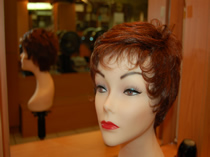
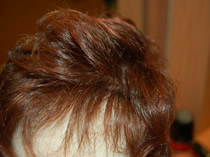
Old Style Weft Wigs: A weft is a line of hair made by machine. In a weft wig, there are series of horizontal lines sewn by machine into a vertical lined cap. If you turn the wig over, you will see vertical and horizontal lines of hair. Weft wigs are economical to make because the hairs are tied by machine. Not only can’t they be parted freely, you can see these lines hair if the wind blows and the base is heavy because of all the added fabric in the cap’s design.
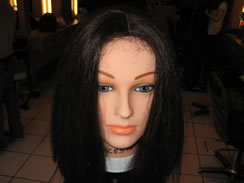
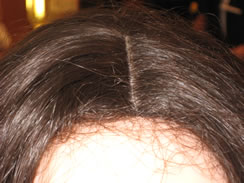
Step 2 (Hair Type): Which hair type is right for you, Synthetic or Human hair?
Most people choose their hair type based on cost. It’s important to also consider the length of your hair and your daily activities. For example, if you wear your hair past your shoulders, we do not recommend Synthetic hair because the fibers will fray in 6-12 months (Synthetic is fine for shorter hair). If you are around heat (i.e. cooking), Heat Resistant Synthetic wigs are recommended. Human hair is a great option; not only does it look more natural, you have the ability to style it with heated styling tools such as flat/curling irons. When buying Human hair, make sure the hair density (or thickness) matches your own.
Step 3 (Cap Size): How to measure your head for a wig?
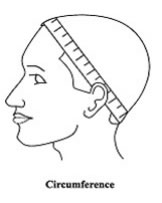 For the best fit wig, it’s important to know how to measure your head for a wig. Just follow these simple instructions for a proper wig size:
For the best fit wig, it’s important to know how to measure your head for a wig. Just follow these simple instructions for a proper wig size:
- Place a tape measure around your head
- Measure slightly above the ears
Step 4 (Length & Style). What style best fits the shape of your face?
One of the most important factors in choosing a wig is face shape. No matter how much you invest in the wig or styling it, the wig must have the capability of matching a style suited for your face otherwise it will be a disaster. The wig should put a perfect frame around a person’s face, minimizing non-pleasing attributes while complimenting positive ones. While a good hairstylist will know instinctively what shape will suit you best, it’s also important to communicate your preferences with your stylist.
Step 5 (Base Type): Which attachment method should I choose?
Wig caps, grips, comb clips and double sided tape are just a few ways to attach a wig. Choosing the right attachment is mainly determined by the regrowth of your natural hair. For example, many people undergoing chemo will eventually regrow their natural hair and will therefore require an attachment method to accommodate it. We provide all the tools and equipment needed for each phase.
Step 6 (Color): What color is best for my skin tone?
Choosing the best hair color is based on your skin tone and eye color. Here are a few quick tips:
- DARK SKIN: Create contrast between your hair and complexion by going lighter or darker such as maple brown, toffee, or other rich colors to bring out the apricot undertones in your skin.
- TAN SKIN: Most people born with natural tan skin are born with black hair. You can add a little flair by lightening the color to a warm brown shade and honey-colored highlights.
- OLIVE SKIN: To balance your greenish undertones, try toasty hues like chestnut brown, auburn and cinnamon, or richer browns such as ebony brown and mocha. For extra depth, add subtle gold or honey highlights.
- FAIR SKIN: The lighter your skin tone the paler you can go with your hair. Butterscotch, strawberry blond and honey shades bring out your complexion and cast a soft glow on your face.

Follow Us!